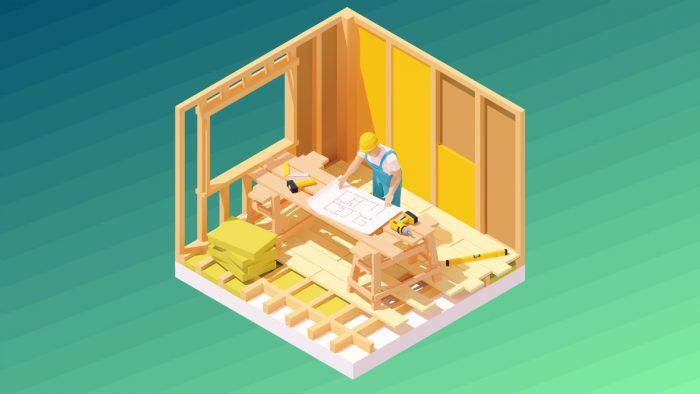Will the Costs of Residential Building Go Down?
While this is a tough question to answer, there are elements of a build that you can strategically focus on to reduce costs.

Everyone involved in the business of building and remodeling homes has been hearing this question frequently from their clients: Will the cost of building go back down?
It is a tough question but with a careful analysis of job costs, I believe that we can answer it by identifying the costs most affected by market volatility. Keeping gross profit out of the equation, we can look at our project costs in terms of labor, commodity materials, and materials determined by client selections.
On the FHB podcast, we recently had a conversation about a reader’s $70,000 bathroom remodel—a cost a lot of our listeners have been understandably surprised by.
Using the data that I assembled for the podcast discussion of this remodel, I distilled the costs for the project into these categories: total labor cost, commodity material, and noncommodity and selection-driven material. Below is a more detailed cost breakdown of how this project likely reached $70,000:
Total cost to produce = $47,000
- Labor costs (65% of total cost) =$30,550; This includes supervision, carpentry, electrical, plumbing, HVAC, tile install, and paint
- Commodity material costs (20% of total cost) =$9400; This includes wood framing, plumbing piping, electrical wiring, metal ductwork, and drywall
- Noncommodity material and selection material cost (15% of total cost) = $7050; This includes tile materials at $15/sq.ft. and builder-grade fixtures.
Selling price to client at 33% gross profit margin= $70,150
Based on these numbers, my answer to the original question—Will the cost of building go down?—is, maybe. Here’s why:
Labor
If you are reading this article, you have likely read other pieces on the labor shortages in every sector of the residential building industry. From carpenters and painters to electricians and plumbers, tradespeople are in high demand and low supply. This has driven many contractors to increase the hourly wage paid to their existing field staff as well as their office support staff. Most of the midsized mechanical contractors that I have spoken with report that they have had to increase their wages multiple times over the last 18 months as a result of larger, sometimes private-equity-backed contractors employing headhunters to lure their best tradespeople away. An HVAC contractor that I work with lamented that he cannot send someone to the local supply house without them being approached.
Demand for workers is subject to the fluctuations of the market demand for remodeling and new construction projects. If this demand should fall off due to rising interest rates or a return to pre-Covid spending habits, it is possible that some of the companies that expanded to meet the high demand could contract back to a smaller size and shrink staff. Some of this staff may retire or leave the industry while others may set up smaller businesses and compete with their former employers, possibly putting some downward pressure on labor costs. Whether this leads to a noticeable decrease in prices seen by homeowners is difficult to predict at best and unlikely at worst. I have yet to speak to anyone in the industry who believes that skilled labor will get any easier to find, hire, and retain. Even if demand does recede, it is unlikely that wages paid to skilled labor will go down.
Materials
The best options for lowering the cost of a construction project will, in most cases, be found in analyzing the cost of materials.
Commodity materials like lumber, PVC, copper, steel, and other metals not only make up the basic building materials for home construction, but they also make up the basic building materials for building components like windows, doors, cabinets, and appliances. Due to the nature of the market, these commodity materials are the best place to look for indications of changing building costs.
Commodity materials will fluctuate as time passes. However, they do not represent a large enough part of the equation to focus on reducing. Using the data above, a 50% reduction in the cost of commodity material only translates to an 11% reduction in cost to produce.
On residential projects, client selections carry the largest cost range. Tile, for example, can range from as little as $1/sq.ft. to over $100/sq.ft., and a next-level cost tied to that $100/sq.ft. tile is that a contractor’s best tile-installation trade partner, who may have a labor rate twice that of the standard installer, is required to install it. High-end light fixtures and plumbing fixtures typically do not follow tile’s variability as the mechanics of the install vary less than that of a machine-made subway tile and a handmade arabesque tile. Scrutinizing client selections is a good place to look for cost savings when the project cost exceeds the client’s budget.
Not having a yes or no answer to the question of building costs that can be universally applied to all projects is frustrating, but having a complete understanding of the costs to produce a project puts all parties in a position where they will have the knowledge needed to potentially move the needle of project cost.
RELATED STORIES



























